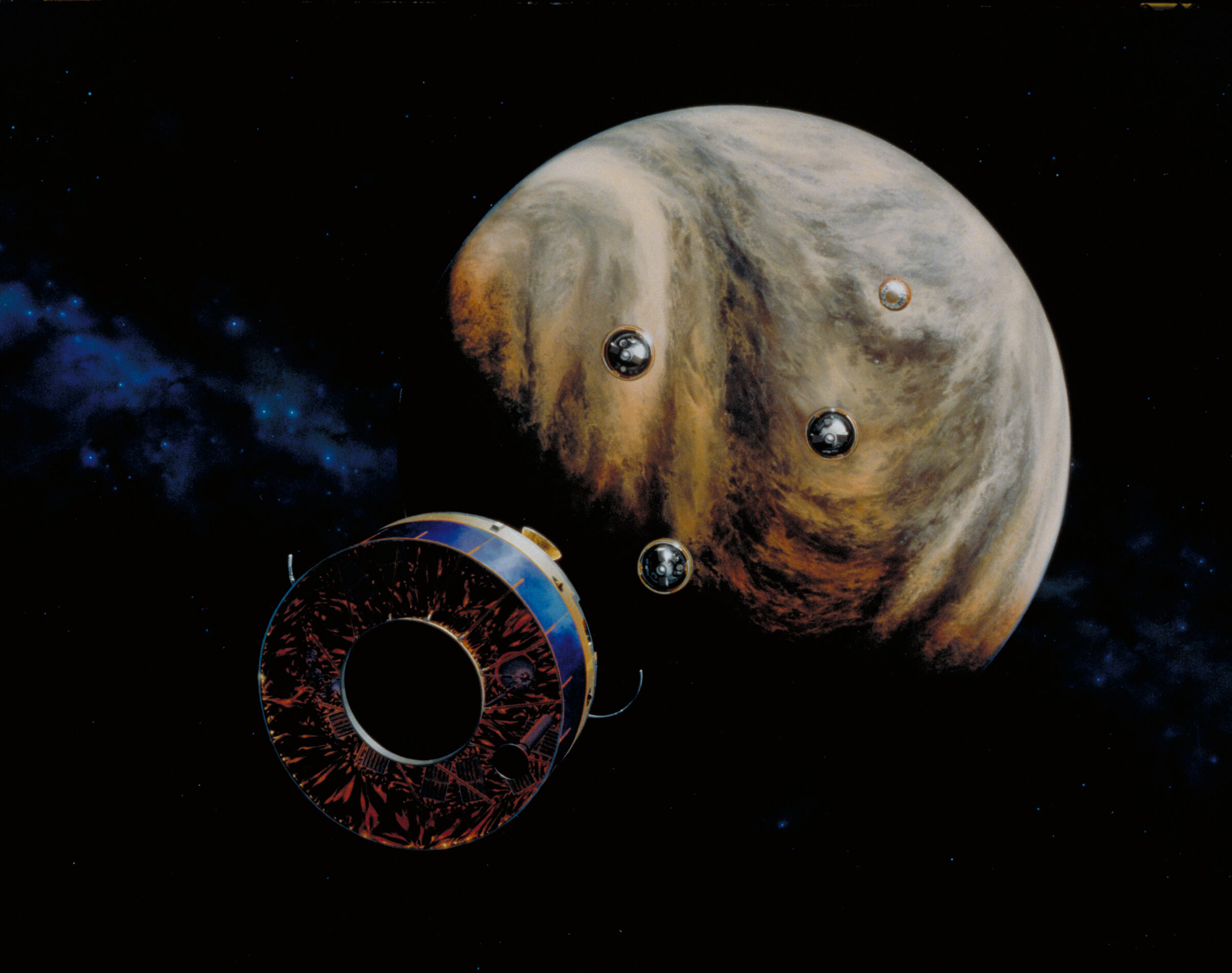The Downlink • Apr 02, 2021
Martian Ingenuity and Venusian imagination
Space Snapshot

Ingenuity, the small drone onboard NASA's Perseverance rover, unpacked itself from the belly of its rover this week, a complicated process that took several days. Next, Perseverance will drive away to allow Ingenuity’s solar batteries to charge before the drone makes its first flight test. If Ingenuity succeeds, it will have performed the first powered, controlled flight on another planet.
You love space, now take action
This weekly newsletter is your toolkit to learn more about space, share information with your friends and family, and take direct action to support exploration. Anyone can subscribe at planetary.org/connect to receive it as a weekly email.
Mission Briefings


A NASA mission to Venus in 1978 may have detected phosphine. A group of scientists say that 43-year-old data from NASA’s Pioneer Venus Multiprobe mission, which deployed a series of probes into the planet’s clouds, may indicate the presence of phosphine and other gases linked to life in Venus’ atmosphere. The findings add to the spirited debate over whether another team of scientists detected phosphine during ground-based telescopic observations in 2017 and 2019, a discovery that has been questioned by other scientists. Pictured: An artist's concept of the Pioneer Venus Multiprobe mission approaching the planet. Image credit: NASA.

Earth is safe from asteroid Apophis for at least the next 100 years. The notorious 450-meter-wide space rock will come closer than geostationary communications satellites in 2029. It previously had a 1-in-150,000 chance of hitting Earth in 2068; radar observations taken during the asteroid’s 5 March flyby have now ruled that out. Learn more about Apophis at planetary.org/apophis.

The United Arab Emirates’ Hope spacecraft has entered its final science orbit around Mars. The mission will build a complete picture of Mars' climate, helping scientists better understand what the planet was like when its atmosphere could have supported life. Hope arrived in its initial Mars orbit on 9 February.

NASA’s Psyche spacecraft is in its final assembly phase before next year’s launch. The spacecraft’s main chassis recently arrived at NASA’s Jet Propulsion Laboratory in Pasadena, California. Psyche launches in August 2022 on a mission to visit a metal-rich asteroid that could be the exposed core of an ancient planet. Learn why we explore small worlds like Psyche.
From The Planetary Society


The 2021 Day of Action was a great success. On 31 March, hundreds of advocates spoke up for space science and exploration in the United States, Canada, and around the world. If you didn’t get a chance to participate on the Day of Action itself it’s not too late. There are things you can do right now to help advance our knowledge of the cosmos. To all those who participated and who supported this work, we are very grateful! Pictured: Planetary Society leaders met with Senator Cynthia Lummis (R-WY, bottom right) and her staff via Zoom as part of the Day of Action.

The list of known exoplanets is growing! The Transiting Exoplanet Survey Satellite (TESS) team has just announced more than 2,200 new exoplanet candidates. TESS communications lead Natalia Guerrero of the Massachusetts Institute of Technology joins this week’s Planetary Radio to talk about these exciting worlds, and about how discoveries like these inspire her many artistic pursuits.
Help us reach new heights!

Our space policy and advocacy program educates and encourages policymakers to invest in space science and exploration through activities like the Day of Action. Right now, this program needs your support, and every donation will go twice as far thanks to a generous Planetary Society member who will match your gift up to a total of $50,000. Help advance space science and exploration today! U.S. residents can also sign a petition telling the new U.S. Administration and Congress to invest in NASA. With your help, we’ll keep advocating for more missions that matter.
What's Up

Early risers will be able to spot bright Jupiter and yellowish Saturn near the predawn eastern horizon. In the evening, look for Mars in the west near the reddish star Aldebaran. Learn more at planetary.org/night-sky.
Wow of the Week

With the possibility of phosphine in Venus’ clouds still igniting debate, we’re reminded of this spectacularly imaginative depiction of Venusian life. “Hello Venus! Hello Alien!” by 9-year-old Yoo-Hong Sun of South Korea won first prize in the youth category of a 2005 art contest sponsored by The Planetary Society and the European Space Agency. Image credit: Yoo-Hong Sun.


 Explore Worlds
Explore Worlds Find Life
Find Life Defend Earth
Defend Earth


